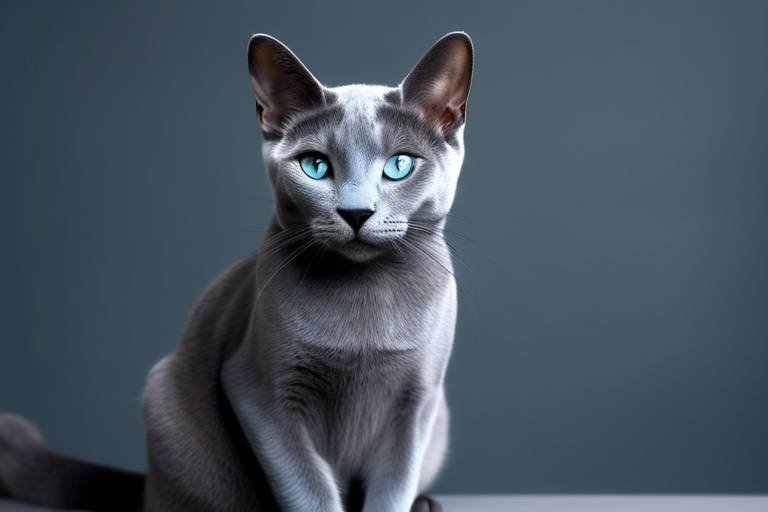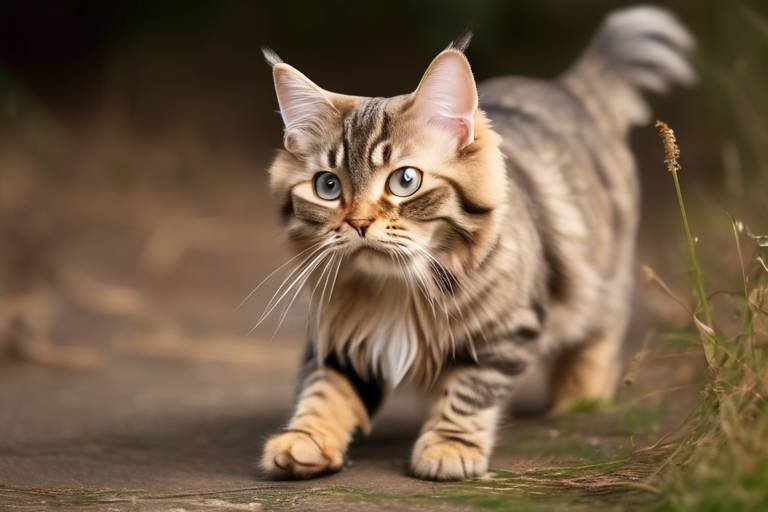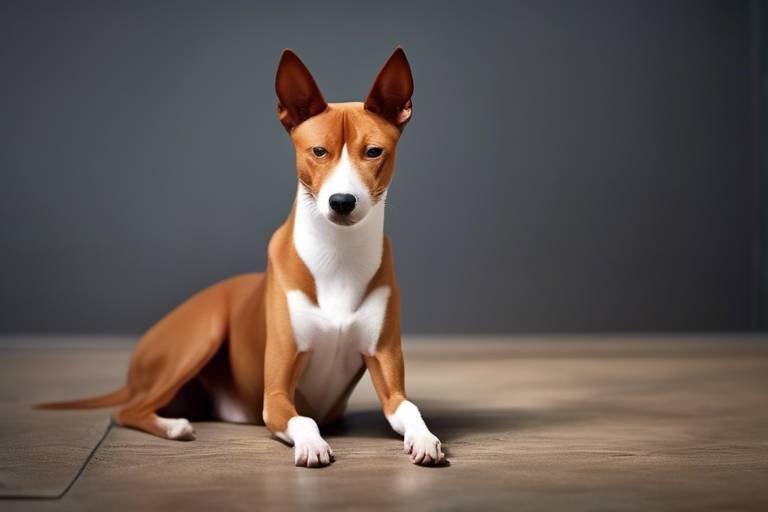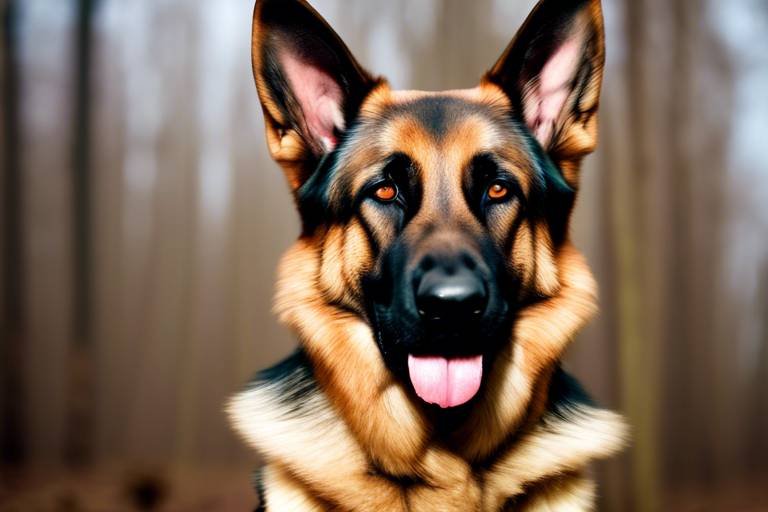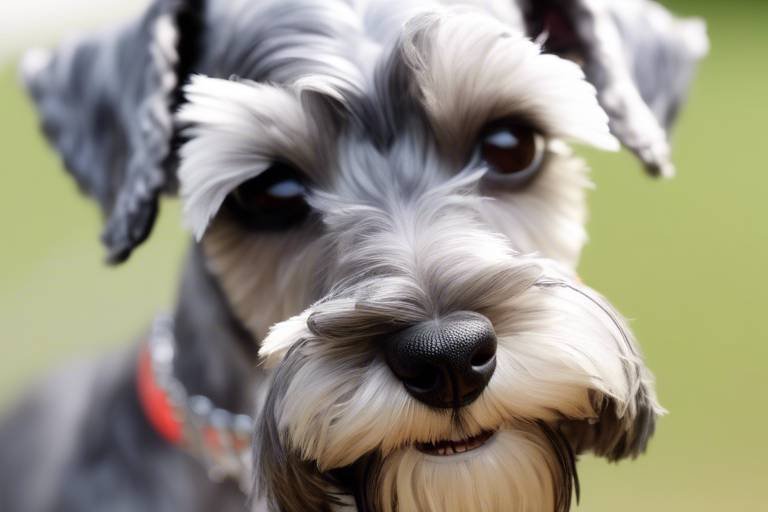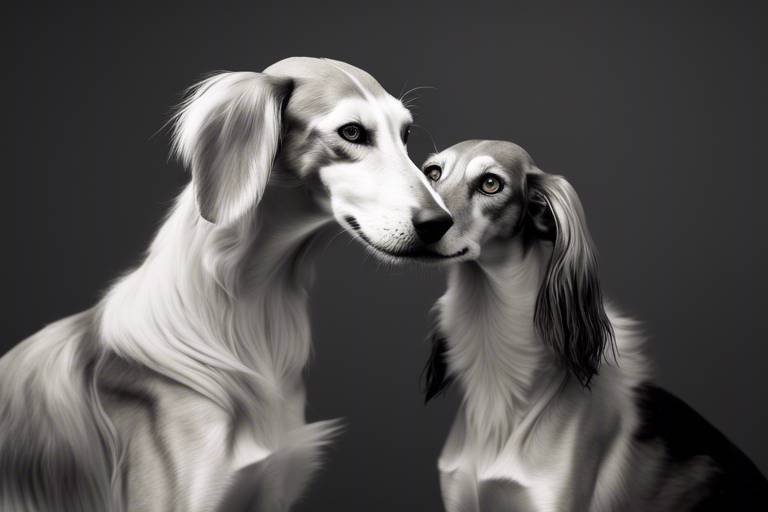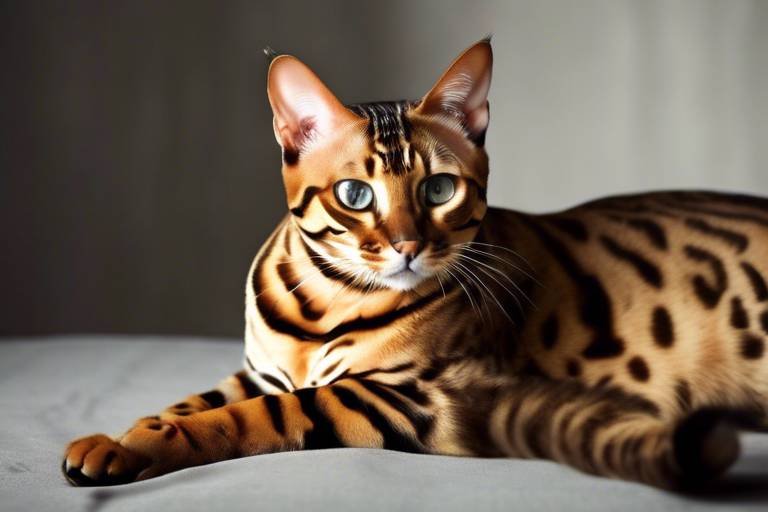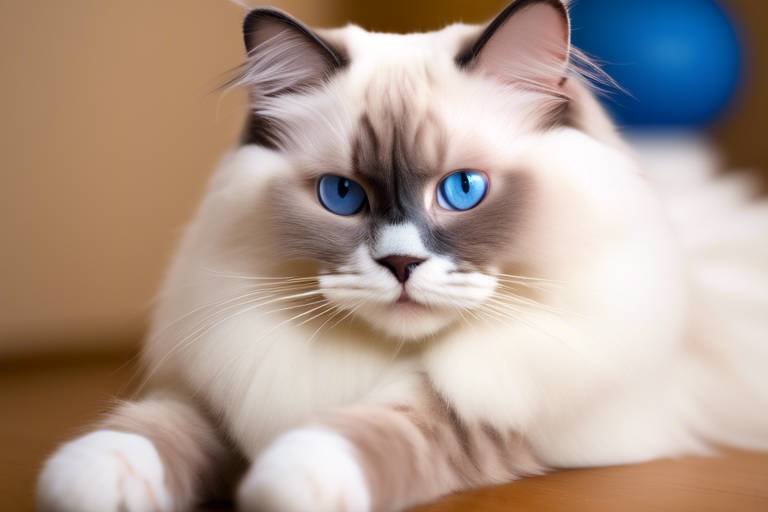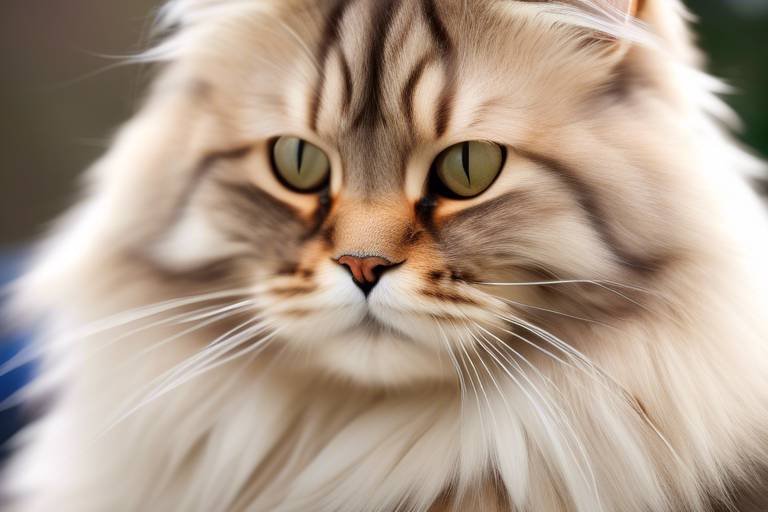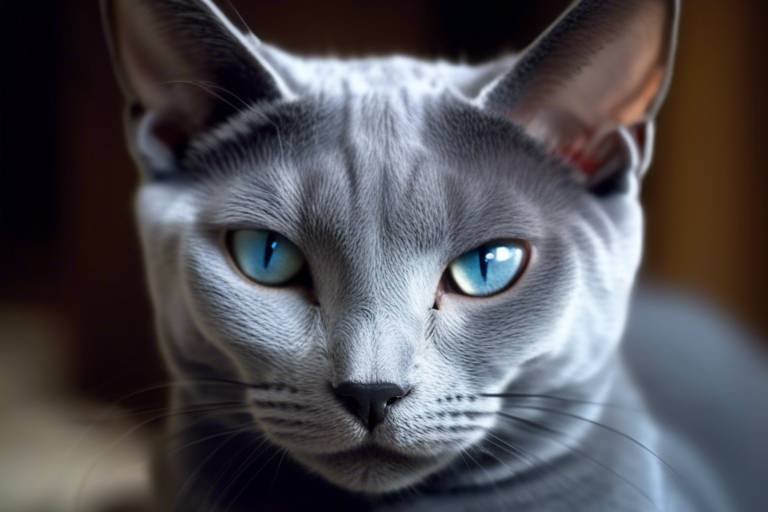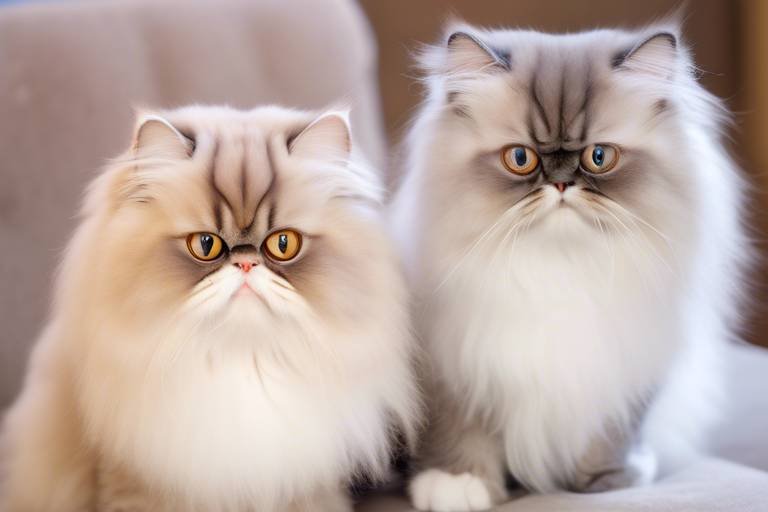The Characteristics of the Great Dane - Gentle Giants
Great Danes are often referred to as gentle giants, and for good reason! These magnificent dogs are not just about their imposing size; they embody a unique blend of elegance, loyalty, and a heartwarming temperament that makes them truly special. With a history that dates back to ancient times, Great Danes were originally bred for hunting and guarding, but today, they are cherished family companions. Their gentle nature and affectionate demeanor make them an ideal pet for families, singles, and seniors alike. In this article, we’ll delve into the various characteristics of Great Danes, exploring their physical attributes, temperament, care needs, and more, to help you understand why these dogs hold such a beloved place in the hearts of many.
When you first lay eyes on a Great Dane, it’s hard not to be taken aback by their impressive size and elegance. Standing at an average height of 28 to 34 inches at the shoulder, these dogs are among the tallest breeds in the world. Their physique is a perfect combination of strength and grace, characterized by a long neck, deep chest, and muscular build. Great Danes come in a variety of colors and patterns, including fawn, brindle, blue, black, and harlequin, each adding to their majestic appearance. Their large, expressive eyes and gentle expression can melt anyone's heart, making them not just pets but also beloved family members.
Despite their size, Great Danes are renowned for their friendly and gentle nature. These dogs are incredibly loyal and affectionate, often forming strong bonds with their human families. They are known to be great with children, displaying a protective yet playful demeanor that makes them wonderful companions for kids. Great Danes thrive on social interaction and love being part of family activities. Their calm disposition often surprises those who expect a large dog to be boisterous or aggressive. Instead, you’ll find a loving giant who just wants to be included in your life.
Proper socialization is crucial for Great Danes to develop into well-adjusted adults. Exposing them to various environments, people, and other animals during their formative years helps them become more adaptable and confident. Early socialization can prevent behavioral issues later on, such as fearfulness or aggression. A well-socialized Great Dane will be a joy to have around, effortlessly fitting into different social situations. Whether it’s a visit to the park, a family gathering, or a trip to the vet, a well-adjusted Great Dane will handle it with grace.
Starting training early is essential for Great Danes, as their size can be challenging to manage if they are not well-behaved. It’s important to establish boundaries and teach them basic commands from a young age. Engaging them in training sessions not only reinforces good behavior but also strengthens the bond between you and your dog. Techniques such as leash training and teaching commands like "sit," "stay," and "come" are vital for their safety and your peace of mind.
Using positive reinforcement strategies helps Great Danes learn more effectively. This method involves rewarding your dog for good behavior with praise, treats, or playtime. For instance, when your Great Dane sits on command, offering a treat or a loving pat reinforces that behavior. This approach not only encourages them to repeat the desired action but also fosters a trusting relationship between you and your pet. Remember, training should be a fun and rewarding experience for both you and your Great Dane!
Great Danes require regular exercise to maintain their health and happiness. While they are not as hyperactive as some smaller breeds, they do need daily walks and playtime to keep their muscles toned and their minds stimulated. Activities such as gentle jogging or playing fetch in a secure yard are excellent ways to keep them active. However, it’s important to avoid excessive exercise, especially in hot weather, as their large bodies can be prone to overheating.
Like all breeds, Great Danes are prone to specific health issues. Regular veterinary check-ups are essential to catch any potential problems early. Common health concerns include bloat, hip dysplasia, and certain heart conditions. Being aware of these issues can help owners provide better care and ensure their Great Dane leads a long, healthy life.
A balanced diet is crucial for the growth and maintenance of Great Danes. Due to their large size, they require a diet rich in high-quality protein, healthy fats, and essential vitamins and minerals. It’s important to consult with your veterinarian to determine the best diet plan tailored to your Great Dane’s age, weight, and activity level. Feeding them the right amount of food can help prevent obesity, which is a common issue in larger breeds.
Understanding the common health problems that affect Great Danes can help owners provide better care. Conditions such as:
- Bloat: A serious condition that can cause the stomach to twist, requiring immediate veterinary attention.
- Hip Dysplasia: A genetic condition that can lead to arthritis and mobility issues.
- Heart Issues: Great Danes are susceptible to certain heart diseases, making regular check-ups essential.
By being proactive about their health, you can help ensure your Great Dane remains a happy and vibrant member of your family.
Great Danes adapt well to various living situations, but their size requires specific considerations. They can thrive in apartments or houses, as long as they have enough space to move around comfortably. However, it’s essential to ensure that your living environment is safe and secure. A fenced yard is ideal for outdoor playtime, while a cozy indoor space is perfect for relaxation. Remember, these gentle giants may not be suited for extreme weather conditions, so providing a comfortable environment is crucial for their well-being.
Q: How much exercise does a Great Dane need?
A: Great Danes typically require about 30 to 60 minutes of exercise daily, which can be split into walks and playtime.
Q: Are Great Danes good with children?
A: Yes! Great Danes are known for their gentle nature and are usually very good with children, making them excellent family pets.
Q: What is the lifespan of a Great Dane?
A: The average lifespan of a Great Dane is around 7 to 10 years, but with proper care, some can live longer.
Q: Do Great Danes require a lot of grooming?
A: Great Danes have short coats that require minimal grooming. Regular brushing helps to reduce shedding and keep their coat healthy.
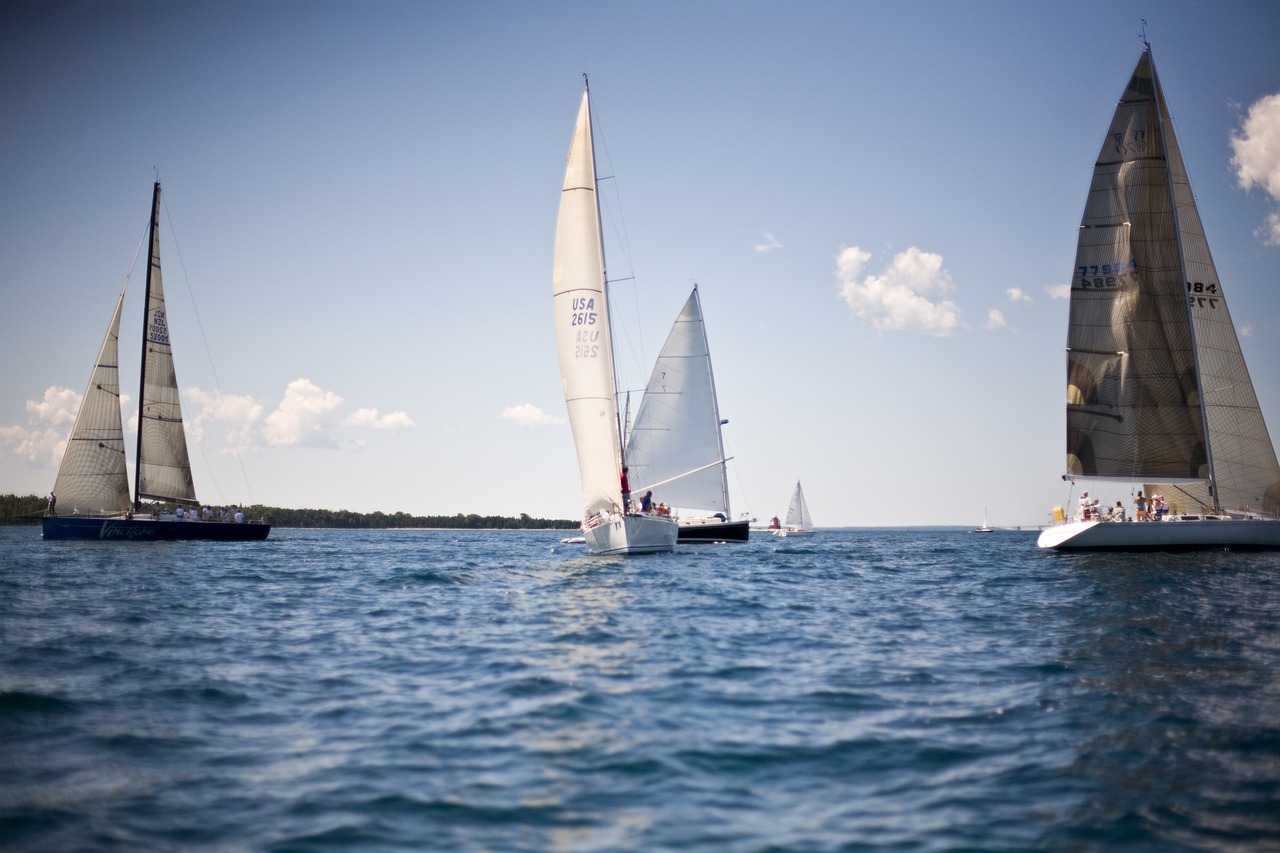
Physical Appearance
Great Danes, often dubbed as the gentle giants of the canine world, boast an impressive physical stature that is nothing short of awe-inspiring. Standing tall at an average height of 28 to 34 inches at the shoulder, these dogs command attention wherever they go. Their long necks and well-defined muscles contribute not only to their majestic appearance but also to their overall strength and agility. Imagine a creature that combines the grace of a gazelle with the power of a lion; that’s the Great Dane for you!
One of the most striking features of Great Danes is their distinctive head shape. They possess a strong, rectangular muzzle that complements their broad skull. This gives them a noble expression, making them look both dignified and approachable. Their large, expressive eyes can range in color from dark to light, often reflecting their friendly and gentle nature. The ears of a Great Dane can be cropped or left natural, and when left natural, they are typically long and hang down, adding to their charm.
When it comes to coat colors, Great Danes are a veritable rainbow of options. Some of the most popular colors include:
- Fawn
- Brindle
- Blue
- Black
- Harlequin (white with black patches)
This variety in coat colors allows potential owners to choose a Great Dane that fits their aesthetic preferences, but regardless of color, all Great Danes share a common trait: their coat is short and smooth, requiring minimal grooming. This makes them relatively low-maintenance in terms of coat care, which is a bonus for busy pet owners!
Another notable aspect of their physical appearance is their powerful build. Great Danes are not just tall; they are also robust, with a deep chest and strong legs that allow them to move with surprising agility for their size. Their large paws help them maintain balance, especially when they’re in motion. When you see a Great Dane running, it’s like watching a majestic horse gallop, and it’s hard not to be captivated by their elegance.
In summary, the physical appearance of a Great Dane is a blend of grace, strength, and beauty. Their towering height, muscular build, and charming expressions make them a breed that is hard to ignore. Whether they're lounging on the couch or strutting around the neighborhood, Great Danes leave a lasting impression, embodying the essence of what it means to be a gentle giant.

Temperament
When you think of a Great Dane, the first image that might come to mind is their **towering stature** and **regal presence**. But beneath that impressive exterior lies a heart full of **gentleness and affection**. Great Danes are often referred to as "gentle giants," and for good reason! Their temperament is one of the most endearing qualities of this breed. These dogs are known for their **friendly demeanor**, which makes them wonderful companions for families, children, and even other pets.
One of the standout traits of a Great Dane is their **loyalty**. They form strong bonds with their families and are incredibly protective, often acting as a guardian while still being playful and loving. Imagine having a dog that can scare off intruders simply by their size, yet is as cuddly as a teddy bear with the kids! This duality is what makes Great Danes so special. They thrive on **human interaction** and often seek out affection, whether it’s snuggling on the couch or following you from room to room.
However, it's essential to recognize that their size can be intimidating to some. This is why **early socialization** is vital. Exposing your Great Dane to various environments, people, and other animals during their formative years helps them develop into well-adjusted adults. A well-socialized Great Dane is not only more comfortable in different situations but also more confident and less likely to exhibit fear-based behaviors. Think of it as giving them the tools they need to navigate the world with ease!
Socialization is not just a one-time event; it’s an ongoing process. Great Danes should be introduced to new experiences regularly. This can include trips to the park, visits with friends, or even playdates with other dogs. The more experiences they have, the better they will adapt to various situations. Here are a few tips for effective socialization:
- Start socialization early, ideally between 3 to 14 weeks of age.
- Expose them to different sounds, sights, and smells.
- Encourage positive interactions with other dogs and people.
- Enroll them in puppy classes to meet other dogs and learn basic commands.
With proper socialization, Great Danes can become the perfect blend of gentle and confident, making them not only great family pets but also **wonderful ambassadors** of their breed.
Training a Great Dane is essential, not just for their well-being but also for yours! Starting early is key. Their size can be a challenge if they haven't learned basic commands and good manners. Think of training as laying the foundation for a strong, respectful relationship between you and your dog. Effective training techniques focus on **positive reinforcement**, which leads us to our next point.
Using positive reinforcement strategies is the most effective way to train a Great Dane. Whether it's praise, treats, or playtime, rewarding good behavior encourages them to repeat it. This method not only makes training sessions enjoyable but also strengthens your bond with your dog. Imagine teaching your Great Dane to sit or stay, and each time they do it right, you reward them with their favorite treat. It’s a win-win situation!
In summary, the temperament of a Great Dane is characterized by their **gentleness**, **affection**, and **loyalty**. With the right socialization and training, they can grow into well-mannered companions who are a joy to have around. Their unique blend of size and sweetness makes them truly one of a kind!
Q: Are Great Danes good with children?
A: Yes! Great Danes are known for their gentle nature and are typically very good with children. However, supervision is always recommended due to their size.
Q: Do Great Danes require a lot of exercise?
A: While they do need regular exercise, Great Danes are not as hyperactive as some smaller breeds. Daily walks and playtime are usually sufficient to keep them happy and healthy.
Q: How do I manage a Great Dane's size during training?
A: Start training early and use positive reinforcement techniques. Teaching commands like sit or stay helps in managing their size and strength.
Q: What is the average lifespan of a Great Dane?
A: Great Danes typically live between 7 to 10 years. Regular veterinary check-ups and a healthy lifestyle can help maximize their lifespan.
Socialization Needs
Socialization is a crucial aspect of raising a well-rounded Great Dane. These gentle giants, despite their imposing size, thrive in environments where they feel comfortable and confident. Just like a child learning to navigate the world, a Great Dane needs exposure to various stimuli to develop into a well-adjusted adult. Imagine trying to fit a square peg into a round hole; without proper socialization, your Dane may struggle to adapt to new experiences.
From a young age, it's essential to introduce your Great Dane to a variety of people, environments, and other animals. This exposure helps them understand the world around them and reduces the likelihood of fear-based reactions later in life. For instance, taking your Dane to a busy park or a dog-friendly café can be an excellent way to gradually acclimate them to different sights and sounds. However, it's important to approach this process with care and patience, ensuring that each experience is positive.
To facilitate effective socialization, consider the following strategies:
- Start Early: Begin socialization as early as possible, ideally during the critical developmental stages of 3 to 14 weeks.
- Positive Experiences: Always pair new experiences with positive reinforcement, such as treats or praise, to create a favorable association.
- Variety is Key: Expose your Dane to different environments, from bustling streets to quiet parks, and introduce them to various people and pets.
Additionally, enrolling your Great Dane in puppy classes can be incredibly beneficial. These classes not only provide structured socialization opportunities but also help you learn how to communicate effectively with your dog. Remember, a well-socialized Great Dane is not just a joy to have at home but also a delightful companion in public settings. They’ll be the gentle giant that everyone admires!
In conclusion, investing time and effort into socializing your Great Dane will pay off tremendously. You'll foster a confident, well-behaved dog who can gracefully navigate the world around them. Just like nurturing a plant, the right environment and care will lead to a flourishing relationship between you and your canine companion.
Early Training
When it comes to Great Danes, starting their training early is not just a suggestion; it's a necessity! These magnificent creatures grow rapidly, and before you know it, your gentle giant could be weighing in at a hefty 150 pounds or more. Imagine trying to control that kind of power without proper training! Early training sets the foundation for a well-behaved dog, ensuring that their size doesn't turn into a challenge for you or your family.
Great Danes are intelligent and eager to please, which makes them relatively easy to train if you start early. Think of training as building a house; the earlier you lay the foundation, the stronger the structure will be. If you wait too long, you might find yourself trying to fix a shaky framework! Begin training as soon as you bring your puppy home, ideally around 8 weeks of age. This is the prime time for them to absorb new commands and behaviors.
One effective technique is to use short, engaging training sessions that last no longer than 5-10 minutes. Puppies have short attention spans, and keeping sessions brief helps maintain their focus. Incorporate fun into the training process; after all, who doesn't love a game? You can use toys or playtime as rewards to motivate them. Here are some essential commands to focus on during early training:
- Sit: A fundamental command that establishes control.
- Stay: Important for safety, especially given their size.
- Come: A vital command for recall and safety.
- Down: Helps in managing excitement and energy levels.
Consistency is key in any training regimen. Use the same commands and hand signals every time, and ensure all family members are on the same page. This consistency helps reinforce what your Great Dane is learning. Additionally, patience is crucial; if they don’t get it right away, don’t lose your cool. Remember, they’re still puppies, and just like kids, they need time to learn.
Another crucial aspect of early training is socialization. Exposing your Great Dane to various environments, people, and other animals during their formative weeks is essential. This exposure will help them develop into well-adjusted adults, reducing the likelihood of fear-based behaviors later on. Consider taking your puppy to puppy classes, dog parks, or even on casual walks around the neighborhood. The more experiences they have, the more confident they will become.
In conclusion, early training for Great Danes is about more than just teaching commands; it’s about establishing a strong bond between you and your dog. By investing time in their training and socialization, you’re not only ensuring a well-behaved pet but also enriching their lives and yours. After all, who wouldn’t want a well-mannered gentle giant by their side?
1. When should I start training my Great Dane?
It's best to start training as soon as you bring your puppy home, ideally around 8 weeks of age. Early training helps them learn commands and behaviors effectively.
2. How long should training sessions be?
Keep training sessions short, ideally between 5-10 minutes, to maintain your puppy's attention and enthusiasm.
3. Is socialization important for Great Danes?
Absolutely! Early socialization helps your Great Dane become a well-adjusted adult. Expose them to different environments, people, and other animals.
4. What training methods are best for Great Danes?
Positive reinforcement methods, such as using treats and praise, are highly effective. They respond well to encouragement and rewards.
5. Can I train my Great Dane myself?
Yes! With patience and consistency, you can train your Great Dane yourself. However, consider enrolling in puppy classes for additional guidance and socialization opportunities.
Positive Reinforcement
When it comes to training a Great Dane, is your best friend. Just like humans, dogs thrive on encouragement and rewards. Imagine a big, fluffy child who just wants to please you; that’s your Great Dane! They’re not just gentle giants; they’re also incredibly eager to learn and impress their owners. By focusing on what they do right rather than punishing them for mistakes, you foster a loving and trusting relationship.
So, what exactly does positive reinforcement look like? It can be as simple as giving your Great Dane a treat, showering them with praise, or even a good belly rub when they follow commands correctly. This method not only makes training sessions enjoyable but also helps your dog associate good behavior with positive outcomes. For example, if your Great Dane sits on command and you reward them immediately, they’ll quickly learn that sitting equals fun and treats!
It’s essential to be consistent with your rewards. Dogs, especially large breeds like Great Danes, can become confused if the rules change frequently. Always use the same commands and reward them every time they respond correctly. Over time, you’ll notice that your Great Dane will start to anticipate the rewards, making them even more eager to obey. Just picture it: a 150-pound dog, tail wagging like a propeller, ready to show off their new tricks!
One effective way to implement positive reinforcement is through a training schedule. Here’s a simple table to illustrate how you might structure your training sessions:
| Day | Command to Practice | Reward Method |
|---|---|---|
| Monday | Sit | Treat + Praise |
| Tuesday | Stay | Praise + Playtime |
| Wednesday | Come | Treat + Belly Rub |
| Thursday | Down | Treat + Praise |
| Friday | Leave It | Praise + Favorite Toy |
Incorporating a variety of rewards keeps training fresh and exciting. Some days, your Great Dane might respond better to treats, while other days, they may be more motivated by play or affection. The key is to pay attention to what works best for your furry friend.
Lastly, always remember that patience is crucial. Training a Great Dane can sometimes feel like teaching a toddler who’s just discovered their own strength. They might get distracted or decide that chasing a butterfly is more interesting than sitting. But with consistent positive reinforcement, you’ll not only see progress but also strengthen your bond, turning your Great Dane into a well-mannered member of the family.
- How long does it take to train a Great Dane? Training times vary, but with consistent positive reinforcement, you can see progress in a few weeks.
- What should I do if my Great Dane isn't responding to positive reinforcement? Ensure that your rewards are appealing enough and consider mixing up the types of rewards.
- Can I use negative reinforcement? It's generally discouraged as it can damage the trust between you and your dog. Stick to positive methods for the best results!
Exercise Requirements
Great Danes, despite their towering stature, are surprisingly agile and energetic. These gentle giants require a balanced amount of exercise to maintain their physical health and mental well-being. You might wonder, how much exercise does a Great Dane really need? Well, the answer is quite simple: they thrive on a routine that includes both physical activity and mental stimulation. Ideally, a Great Dane should have at least 30 to 60 minutes of exercise each day, which can be broken down into various activities that keep them engaged and happy.
Walking is one of the best forms of exercise for Great Danes. A daily walk not only helps them expend energy but also allows them to explore the world around them. Imagine taking a stroll with your Great Dane, the two of you enjoying the fresh air and the sights—it's a bonding experience like no other! However, it's important to remember that their size means they require a leash that can handle their strength, especially if they see a squirrel darting across the path!
In addition to walks, Great Danes love to play. Activities such as fetch or tug-of-war can be fantastic ways to keep them active. Just be cautious not to overdo it, particularly in hot weather. Great Danes are sensitive to heat, and their large bodies can overheat quickly. Always ensure they have access to fresh water and a shady spot to rest after playtime.
To keep things interesting, consider incorporating different types of exercise into their routine. Here are some ideas:
- Swimming: Many Great Danes enjoy swimming, which is a great low-impact exercise that is easy on their joints.
- Agility Training: Setting up an agility course in your backyard can provide both physical exercise and mental challenges.
- Dog Parks: Visiting a dog park can allow your Great Dane to socialize with other dogs, which is beneficial for their mental health.
It's crucial to listen to your dog's body language. If they seem overly tired or reluctant to continue, it's time to take a break. Remember, while Great Danes are known for their size, they also have hearts full of love and energy. Keeping them active not only contributes to their physical health but also strengthens the bond you share. A well-exercised Great Dane is a happy Great Dane!
Q: How much exercise do Great Danes need as puppies?
A: Puppies require less intense exercise than adults, usually around 15 to 30 minutes of playtime several times a day. This helps them develop their muscles and coordination without risking injury.
Q: Can Great Danes live in apartments?
A: Yes, Great Danes can adapt to apartment living, provided they get enough exercise. Daily walks and playtime are essential to keep them healthy and happy.
Q: Are there any exercises to avoid with Great Danes?
A: High-impact exercises, especially those that involve jumping or excessive running on hard surfaces, should be avoided, particularly in young dogs whose bones are still developing.
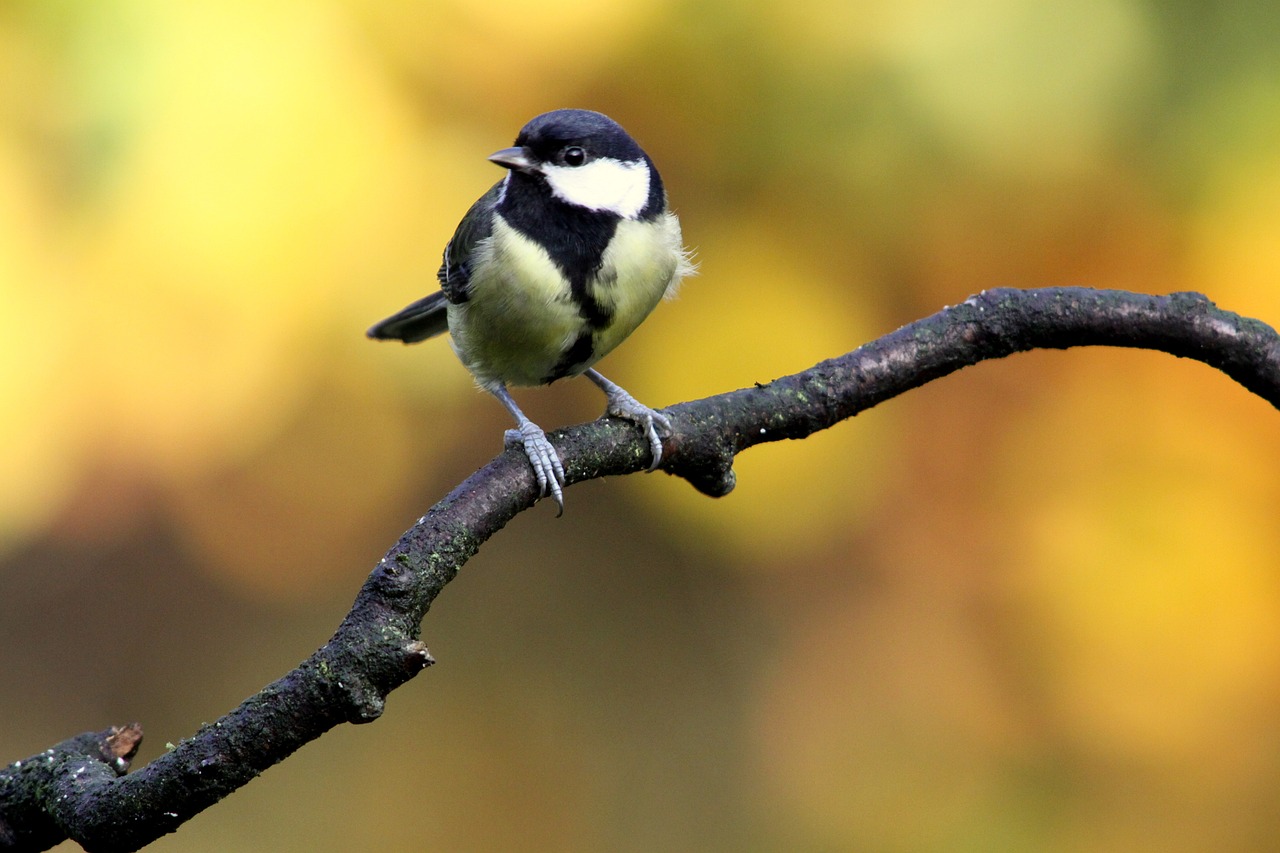
Health Considerations
When it comes to the majestic Great Dane, their health is a topic that deserves serious attention. These gentle giants, despite their impressive size, can be prone to specific health issues that every owner should be aware of. Understanding these conditions not only helps in providing better care but also ensures that your furry friend leads a long and happy life. Just like any other breed, Great Danes require a proactive approach to their health, which includes regular veterinary check-ups, a balanced diet, and a good exercise routine.
One of the most critical aspects of maintaining your Great Dane's health is being aware of their unique nutritional needs. Due to their size, they require a diet rich in high-quality proteins and essential nutrients to support their growth and overall well-being. It's important to consult your veterinarian to determine the best diet plan tailored specifically for your Great Dane. Below is a general overview of their dietary needs:
| Nutrient | Importance |
|---|---|
| Protein | Essential for muscle development and maintenance. |
| Calcium | Supports bone health and strength, crucial for their large structure. |
| Omega Fatty Acids | Promotes healthy skin and coat, and supports brain function. |
| Vitamins and Minerals | Vital for overall health, immune function, and energy levels. |
In addition to diet, Great Danes are particularly susceptible to certain health issues, which makes it essential for owners to remain vigilant. Some common conditions include:
- Bloat: This is a life-threatening condition that can affect Great Danes due to their deep chests. It's essential to recognize the signs, such as a distended abdomen and restlessness, and seek immediate veterinary care.
- Hip Dysplasia: A genetic condition that affects the hip joint, leading to arthritis and pain. Regular vet check-ups can help monitor this condition.
- Heart Issues: Great Danes are prone to dilated cardiomyopathy, a serious heart condition. Regular screenings can help catch this early.
By being aware of these potential health issues, you can take proactive steps in your Great Dane's care. Regular veterinary visits are crucial, as they allow for early detection and treatment of any health problems. Additionally, maintaining a healthy weight through a balanced diet and adequate exercise can significantly reduce the risk of many health issues.
Lastly, the living environment plays a significant role in the health of your Great Dane. They thrive in spacious areas where they can move freely. Ensuring that your home is safe and accommodating for such a large breed is essential. This includes having a comfortable sleeping area, safe spaces to play, and avoiding hazards that could lead to injuries.
Q: How often should I take my Great Dane to the vet?
A: It's recommended to have annual check-ups, but more frequent visits may be necessary if your dog has specific health concerns.
Q: What is the best diet for a Great Dane?
A: A diet rich in high-quality protein, calcium, and essential nutrients is ideal. Consult your vet for personalized recommendations.
Q: How can I prevent bloat in my Great Dane?
A: To reduce the risk of bloat, feed smaller meals throughout the day, avoid vigorous exercise immediately after eating, and consider using a slow feeder.
Q: Are Great Danes good with children?
A: Yes, Great Danes are known for their gentle and friendly nature, making them great companions for children when properly socialized.
Dietary Needs
When it comes to the dietary needs of Great Danes, it's essential to recognize that their size and energy levels require a specialized approach to nutrition. These magnificent creatures, often referred to as gentle giants, need a diet that supports their growth, maintains their health, and fuels their playful spirit. The right balance of nutrients not only helps them thrive but also plays a significant role in their overall well-being.
Great Danes are large breed dogs, and as such, they have specific nutritional requirements that differ from smaller breeds. A good quality dog food that is formulated for large breeds is highly recommended, as it ensures that they receive the right amount of protein, fat, and carbohydrates. Typically, a diet rich in high-quality protein sources, such as chicken, lamb, or fish, is ideal. This protein supports muscle development and keeps their energy levels up.
Additionally, it's crucial to pay attention to the calorie content of their food. Overfeeding can lead to obesity, which is a common concern for Great Danes due to their size. An average adult Great Dane may require anywhere from 4 to 8 cups of food per day, depending on their size, age, and activity level. It's wise to divide their meals into two or three smaller portions throughout the day to prevent bloat, a serious condition that Great Danes are particularly prone to.
Here’s a quick breakdown of the essential dietary components for Great Danes:
| Nutrient | Importance |
|---|---|
| Protein | Supports muscle growth and overall health. |
| Fats | Provides energy and supports skin and coat health. |
| Carbohydrates | Source of energy and aids in digestion. |
| Vitamins & Minerals | Essential for immune function and overall health. |
Moreover, hydration is just as important as nutrition. Great Danes need access to fresh, clean water at all times, especially after meals and exercise. It's also a good idea to monitor their water intake, as dehydration can lead to serious health issues.
Lastly, while it’s tempting to share our food with our furry friends, it's important to remember that certain human foods can be harmful to dogs. Foods such as chocolate, grapes, and onions should always be avoided. Instead, consider offering healthy treats like carrots or apples in moderation. This not only keeps them happy but also provides additional nutrients.
In summary, meeting the dietary needs of a Great Dane is crucial for their health and happiness. By providing a balanced diet tailored to their size and energy requirements, along with regular veterinary check-ups, you can help ensure that your gentle giant lives a long, fulfilling life.
- What is the best type of food for a Great Dane? Look for high-quality dog food specifically formulated for large breeds.
- How often should I feed my Great Dane? It's best to feed them two to three smaller meals a day to prevent bloat.
- Can Great Danes eat human food? While some human foods are safe, many can be harmful. Stick to dog-safe treats.
- How much water should a Great Dane drink? They should have constant access to fresh water, especially after meals and exercise.
Common Health Issues
Great Danes, often affectionately referred to as "gentle giants," are not just known for their impressive size but also for certain health challenges that can arise due to their unique physiology. Understanding these common health issues is crucial for any Great Dane owner, as it enables them to provide better care and ensure a longer, healthier life for their beloved pet. One of the most significant concerns for Great Danes is bloat, also known as gastric torsion or twisted stomach. This condition occurs when the stomach fills with gas and twists on itself, which can be life-threatening if not treated immediately. Symptoms to look out for include restlessness, a swollen abdomen, and attempts to vomit without success.
Another prevalent issue is hip dysplasia, a genetic condition where the hip joint doesn't fit snugly into the hip socket. This can lead to pain and arthritis, significantly affecting a Great Dane's mobility. Regular vet check-ups and maintaining a healthy weight can help mitigate this risk. Additionally, Great Danes are prone to heart issues, particularly dilated cardiomyopathy, which affects the heart's ability to pump blood effectively. Symptoms might include lethargy, coughing, and a decreased tolerance for exercise. Early detection through routine vet visits is essential for managing these conditions.
To give you a clearer picture, here’s a brief overview of some common health issues faced by Great Danes:
| Health Issue | Description | Symptoms |
|---|---|---|
| Bloat | A life-threatening condition where the stomach twists and fills with gas. | Swollen abdomen, restlessness, unsuccessful vomiting |
| Hip Dysplasia | A genetic condition affecting the hip joint, leading to pain and arthritis. | Pain, limping, difficulty rising |
| Heart Issues | Conditions like dilated cardiomyopathy that affect heart function. | Lethargy, coughing, decreased exercise tolerance |
Furthermore, Great Danes can also experience thyroid issues, which can lead to a variety of symptoms, including weight gain, lethargy, and skin problems. Regular blood tests can help detect this condition early. Lastly, skin disorders like allergies and dermatitis can also affect Great Danes, often manifesting as itching, redness, or hair loss. Identifying and addressing these issues promptly can make a significant difference in your dog's quality of life.
In conclusion, while Great Danes are magnificent companions, they come with their own set of health considerations. By being aware of these common health issues and maintaining a proactive approach to their care, you can help ensure that your gentle giant lives a long, vibrant, and happy life.
- What is the average lifespan of a Great Dane? Great Danes typically live between 7 to 10 years.
- How often should I take my Great Dane to the vet? Regular check-ups every 6 to 12 months are recommended.
- What can I do to prevent bloat in my Great Dane? Feeding smaller meals, avoiding vigorous exercise after eating, and using a raised food bowl can help reduce the risk.
- Do Great Danes require special dietary needs? Yes, they need a balanced diet formulated for large breeds to support their growth and health.
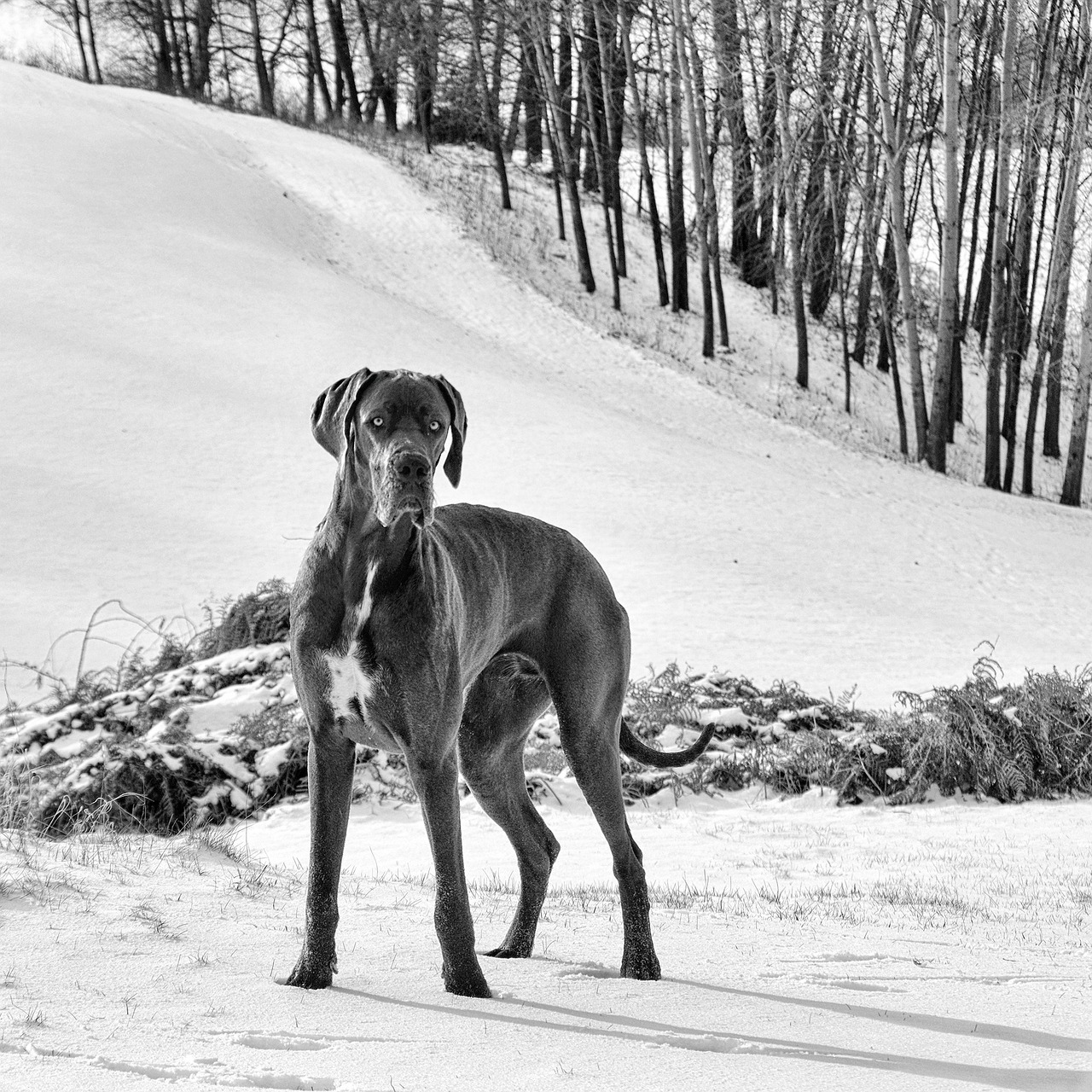
Living Arrangements
Great Danes, often dubbed as gentle giants, are truly magnificent creatures that require thoughtful living arrangements. Their impressive size means that they need ample space to move around comfortably. A cramped environment can lead to stress and discomfort for these majestic dogs, so it’s essential to consider the space available in your home before bringing one into your life.
While Great Danes can adapt to various living situations, they thrive best in homes with larger living spaces. Ideally, a house with a yard is the perfect setting for a Great Dane, as it provides them with room to run and play. However, if you live in an apartment, don’t fret! With proper care and attention, Great Danes can live happily in smaller spaces as long as they receive adequate exercise. Just imagine them lounging around your living room, their long legs sprawled out, as they keep a watchful eye on their family.
When setting up your home for a Great Dane, consider the following:
- Secure Space: Make sure your living area is free from hazards. Great Danes, due to their size, can inadvertently knock over items, so it’s best to keep fragile décor out of reach.
- Comfortable Sleeping Area: Provide a spacious, comfortable bed that can accommodate their size. A good quality orthopedic bed can help support their joints and ensure a restful sleep.
- Temperature Control: Great Danes are sensitive to extreme temperatures. Ensure that your home is well-ventilated and maintain a comfortable temperature, especially during hot summer days.
Additionally, consider the layout of your home. Open floor plans are fantastic for Great Danes, as they allow for easy navigation and play. If you have stairs, be cautious; while many Great Danes can manage stairs, it’s important to monitor their movements to prevent any strain on their joints.
Socialization is another critical aspect of their living arrangements. Great Danes are social creatures that enjoy being around people and other pets. Ensure that your home is a welcoming environment where they can interact with family members and visitors. This not only helps them feel secure but also encourages their friendly nature to shine through.
In summary, creating a suitable living arrangement for a Great Dane involves more than just providing space. It requires an understanding of their needs, both physical and emotional. By ensuring they have enough room to thrive, a safe environment to explore, and a loving family to bond with, you can create a happy home for your gentle giant.
- Can Great Danes live in apartments? Yes, they can, but they need regular exercise and space to move around comfortably.
- Do Great Danes require a lot of outdoor space? While they enjoy outdoor space, they can adapt to smaller areas if they receive sufficient exercise.
- What type of bed is best for a Great Dane? An orthopedic bed that supports their large size is ideal for their comfort and joint health.
Frequently Asked Questions
- What is the average size of a Great Dane?
Great Danes are truly impressive in size! Males typically stand between 30 to 34 inches tall at the shoulder, while females range from 28 to 32 inches. Their weight can vary quite a bit, usually falling between 110 to 175 pounds. Just imagine having a dog that’s taller than some kids!
- Are Great Danes good with children?
Absolutely! Great Danes are known for their gentle and friendly nature, making them fantastic companions for kids. They tend to be very patient and protective, often forming strong bonds with family members, especially little ones. Just remember, due to their size, supervision is key to prevent any accidental knocks!
- How much exercise do Great Danes need?
Great Danes require a good amount of exercise to keep them healthy and happy. A daily walk of about 30 to 60 minutes is ideal, along with some playtime in a secure area. Think of it as giving them a chance to stretch those long legs and burn off some energy!
- What are common health issues in Great Danes?
Like many large breeds, Great Danes can be prone to certain health issues. Common concerns include bloat, which is a serious condition that can cause the stomach to twist, hip dysplasia, and heart problems. Regular vet check-ups can help catch these issues early!
- Do Great Danes require special dietary needs?
Yes, they do! Due to their size, Great Danes need a balanced diet that supports their growth and overall health. High-quality dog food designed for large breeds is essential. It's like feeding a giant athlete—proper nutrition is crucial for their well-being!
- Can Great Danes live in apartments?
While Great Danes can adapt to apartment living, it’s important to ensure they have enough space to move around comfortably. They do need regular exercise, so access to parks or open areas is a must. Think of it like living in a cozy studio—just make sure to get out and stretch those legs!
- How important is socialization for Great Danes?
Socialization is super important for Great Danes! Exposing them to different people, environments, and other animals during their formative years helps them grow into well-adjusted adults. It's like giving them a crash course in being a friendly giant!
- What training methods work best for Great Danes?
Positive reinforcement is the way to go! Great Danes respond best to praise, treats, and rewards during training sessions. It's all about making learning fun and rewarding for them. Imagine teaching a big puppy—encouragement goes a long way!



